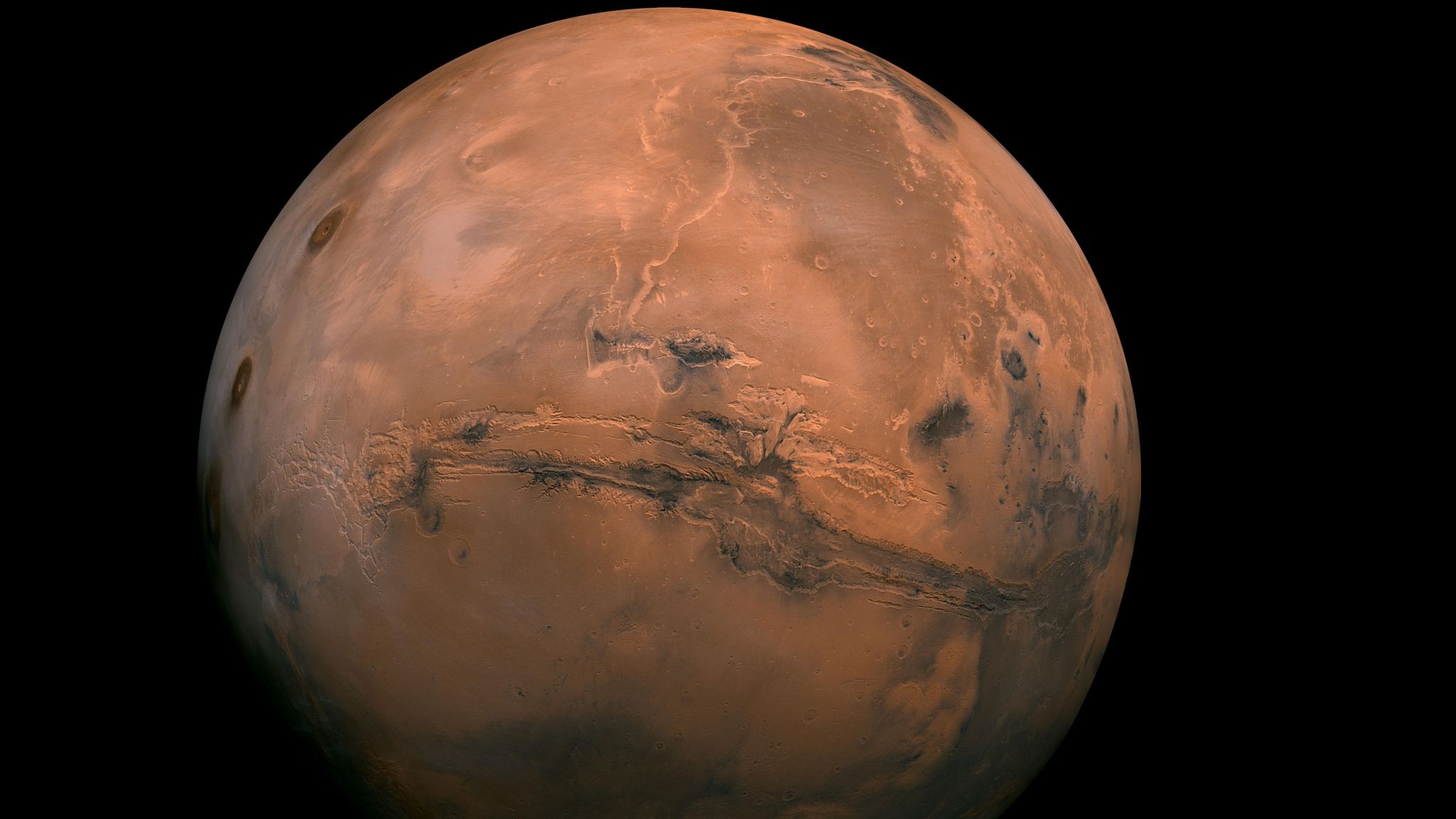WHY EXPLORE MARS?
2021 FEB 19
Mains >
Science and Technology > Space technology > Space organisations & missions

IN NEWS:
NASA's science rover Perseverance, the most advanced astrobiology laboratory ever sent to another world, landed safely on the floor of a vast crater on the Red Planet.
MARS:
- Mars is the fourth planet from the Sun and the second-smallest planet in the Solar System. It is named for the Roman god of war.
- Mars day on Mars lasts 24.6 Earth hours and a year lasts 687 Earth days.
- Its surface gravity is 37.5 % of Earth’s and has a far thinner atmosphere than Earth.
- Mars’s axis of rotation is tilted 25.2 degrees, which helps give Mars seasons similar to those on Earth.
- Mars also lacks an active plate tectonic system and a magnetic field.
- Mars is known as the Red Planet because iron minerals in the Martian soil oxidize, or rust, causing the soil and atmosphere to look red.
WHY EXPLORE MARS?
- Next frontier: The more we learn about Mars, the better equipped we’ll be to try to make a living there, someday in the future. Mars could also be the base for future interplanetary missions.
- Search for life: Understanding whether life existed beyond Earth is a fundamental question of humankind. Mars is an excellent place to investigate because evidence suggests that Mars once had a potentially habitable environment.
- Presence of water: Water does exist on Mars, though it is locked in the planet’s icy polar caps and perhaps buried beneath the Martian surface. Studies have found clear evidences of relict lakes and rivers on the planet’s surface. Such studies are vital to develop Mars into a habitable planet.
- Understand the impact of climate change: Exploring Mars helps scientists learn about momentous shifts in climate that can fundamentally alter planets.
- Understand earth’s evolutionary history: Studying Mars could help scientists get answers to questions like how Mars transformed from a potentially habitable world to its current state, which can provide insights into what makes Earth a habitable planet.
GLOBAL MARS MISSIONS:
Since the 1960s, humans have sent dozens of spacecrafts to study Mars. So far, four space agencies- NASA, Russia’s Roscosmos, the European Space Agency (ESA), and the Indian Space Research Organization (ISRO)- have put spacecraft in Martian orbit.
- In 1976, NASA’s Viking 1 and 2 became the first spacecraft to successfully operate on the planet’s surface. In 1996, Mars Pathfinder mission put the first free-moving rover (called Sojourner) on the planet. Its successors include the rovers Spirit and Opportunity.
- Now, three NASA spacecraft are active on the Martian surface:
- InSight, which aims to unravel the mysteries of Mars’s interior
- Curiosity, which is studying the rocks and sediments in an ancient lakebed
- Perseverance, which is seeking signs of life and habitable conditions on Mars in the ancient past
- NASA is targeting the 2030s as a reasonable timeframe for setting the first boots on Mars. It is developing a space capsule ‘Orion’ to ferry humans to the moon and beyond. Private spaceflight companies such as SpaceX are also getting into the Mars game.
- Similarly, there is the ExoMars programme by the European Space Agency (ESA) and the Russian space agency Roscosmos. It comprises two missions: the Trace Gas Orbiter launched in 2016 and a rover and surface platform, planned for 2022.
- The United Arab Emirates and China might join the ‘Mars club’ if their recently launched Hope and Tianwen-1 missions reach the red planet safely in February 2021.
INDIA’S MARS MISSIONS:
- The Mars Orbiter Mission, also called Mangalyaan, marked India's first venture into the interplanetary space. It was launched on in November 2013.
- The primary objective of the mission is to develop the technologies required for designing, planning, management and operations of an interplanetary mission.
- The secondary objective is to explore Martian surface features, morphology, mineralogy and atmosphere using indigenous scientific instruments.
- ISRO is planning to launch a follow-up mission called Mars Orbiter Mission 2 (Mangalyaan-2) with an upgraded orbiter and scientific payload to Mars in 2024. The mission could also include a lander and a rover.
CONCLUSION:
- With the success of Perseverance and launch of Hope and Tianwen-1, the ‘Race for Mars’ has truly begun.
- Soon, in one way or another, humanity may finally know whether our neighboring planet ever hosted life, and whether there’s a future for our species on another world.
- India is poised to be a major player in this scenario, given the excellent cost-effective track record, policy support by government, the gradual involvement of private through NewSpace India Limited and promotion of innovation through ‘IN-SPACe’. The draft space policy is expected to bring further benefits for India’sspace sector.
PRACTICE QUESTION:
Q. Examine the rationale behind the Mars missions, with special reference to India’s efforts in this regard?
